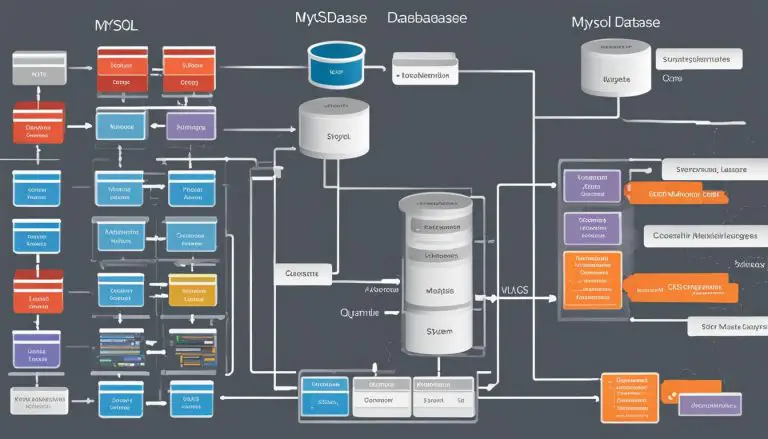In a Nutshell: What is Opensource Explained
Opensource refers to a type of software or platform where the source code is freely available for anyone to view, modify, and distribute. It is a collaborative approach to development, where a community of programmers can contribute to the improvement and customization of the software. This concept promotes transparency, innovation, and flexibility in the digital world.
Key Takeaways:
- Opensource software allows anyone to access, modify, and distribute the source code.
- Collaboration among programmers in the opensource community drives innovation.
- Transparency and flexibility are key benefits of opensource.
- Opensource promotes customization and adaptation to specific needs.
- Opensource empowers users to shape the future of technology.
Understanding the Inner Workings of Opensource
Opensource software development is a collaborative approach that embraces open collaboration and open innovation. It begins with a thorough understanding of the problem statement at hand. Before any coding can take place, programmers need to have a clear understanding of what is demanded. They also need to learn about the input data, including its format, sources, and specific requirements. Additionally, understanding the output requirements, constraints, and potential corner cases is crucial in developing an effective solution.
Opensource development promotes collaboration and encourages open innovation. Senior programmers play a vital role in this process by seeing the big picture and making informed decisions to create efficient and innovative solutions. They facilitate the collaboration among developers, ensuring that all the necessary elements are considered and incorporated into the software. By leveraging the collective knowledge and expertise of the community, opensource software development thrives in an environment of collaboration and shared learning.
In the world of opensource, the focus is not only on the end product but also on the process of development. Developers constantly share their code, ideas, and suggestions with each other, allowing for continuous improvement and innovation. This open collaboration fosters a sense of community and creates a supportive environment where programmers can learn from one another and push the boundaries of what is possible. Opensource software development is driven by passion, curiosity, and the desire to create something meaningful that can benefit the larger community.
Open Collaboration: A Catalyst for Innovation
The success of opensource software development lies in its open collaboration. It enables developers to work together, leveraging their collective skills and knowledge to solve complex problems and create innovative solutions. Open collaboration encourages transparency, fosters creativity, and sparks innovation. It allows developers to iterate on ideas, learn from each other’s successes and failures, and build upon existing knowledge to push the boundaries of what is possible.
The Benefits of Opensource
Opensource offers a multitude of benefits that make it a compelling choice for individuals, businesses, and organizations. One of the key advantages is its cost-effectiveness. Instead of investing in expensive proprietary software, opensource provides access to high-quality software for free. This significant cost reduction allows businesses to allocate their budget towards other critical areas.
Another major benefit of opensource is the vibrant community that surrounds it. The opensource community is comprised of passionate developers and users who actively contribute their expertise, ideas, and support. This collaborative environment fosters innovation and drives continuous improvement in opensource software. Community-driven development ensures that the software stays up-to-date, secure, and reliable.
Transparency and accountability are fundamental principles of opensource development. The source code of opensource software is openly available for scrutiny, allowing developers to identify and fix vulnerabilities quickly. This leads to more secure and reliable software that can be trusted by users. The transparency of opensource software also provides reassurance to organizations concerned about data privacy and security.
The Opensource Community
The opensource community is a diverse and inclusive group of individuals who share a common passion for collaborative software development. It consists of developers, users, contributors, and enthusiasts who work together to improve opensource software. The community provides a platform for knowledge sharing, support, and learning. It fosters a culture of collaboration and encourages individuals to contribute their skills and expertise to the collective benefit of the community.
Being a part of the opensource community has numerous advantages. It allows developers to enhance their skills, gain valuable experience, and build a strong professional network. Collaborating with other like-minded individuals provides the opportunity to learn from each other, exchange ideas, and tackle complex problems together. The opensource community also values diversity and inclusivity, welcoming individuals from different backgrounds and skill levels to contribute and make a meaningful impact.
| Benefits of Opensource | |
|---|---|
| Cost-effectiveness | Access to high-quality software for free. |
| Community-driven Development | Active collaboration, innovation, and continuous improvement. |
| Transparency and Accountability | Open source code for security, reliability, and trust. |
Examples of Opensource Platforms
Opensource platforms offer users flexibility, customization options, and community support for successful website development. Here are some popular opensource platforms:
Linux
Linux is an opensource operating system widely used in server environments. It provides a stable and secure foundation for hosting websites and running various applications.
WordPress
WordPress is an opensource content management system that powers millions of websites. It offers a user-friendly interface, a vast library of plugins and themes, and a strong community for support and troubleshooting.
Drupal
Drupal is an opensource content management system known for its powerful capabilities and scalability. It is suitable for building complex and feature-rich websites, including e-commerce platforms and community portals.
Joomla
Joomla is an opensource content management system that is easy to use and versatile. It allows users to create websites, online communities, blogs, and much more, with a wide range of available extensions and templates.
Magento
Magento is an opensource e-commerce platform that empowers businesses to create and manage their online stores. It offers a robust set of features for product catalog management, shopping cart functionality, and payment integration.
Opensource in Technology Advancements
Opensource technology is playing a significant role in shaping our digital future. It has paved the way for advancements in various fields, including artificial intelligence, blockchain, and the Internet of Things. The collaborative nature of opensource empowers developers to work together, sharing knowledge and expertise to create innovative solutions that drive progress.
One of the areas where opensource is making a substantial impact is artificial intelligence (AI). AI algorithms and models are being developed and shared openly, allowing for faster development and wider adoption. Opensource AI frameworks such as TensorFlow and PyTorch have democratized the field, enabling developers around the world to leverage AI capabilities and contribute to its evolution.
Blockchain technology, the backbone of cryptocurrencies like Bitcoin, is also heavily influenced by the opensource movement. Blockchain networks are built on the principles of transparency, decentralization, and immutability, aligning with the core values of opensource. The opensource nature of blockchain allows for peer-reviewed code, promoting security and accountability in a technology that relies on trust.
| Opensource Technology Advancements | Description |
|---|---|
| Artificial Intelligence | Opensource AI frameworks like TensorFlow and PyTorch have accelerated AI research and development. |
| Blockchain | Opensource blockchain networks ensure transparency, security, and trust in decentralized systems. |
| Internet of Things (IoT) | Opensource platforms and libraries enable the development of interconnected IoT devices and applications. |
The Internet of Things (IoT) is another area where opensource is driving technological advancements. Opensource platforms and libraries provide developers with the tools and resources needed to build interconnected IoT devices and applications. This collaborative approach allows for faster development cycles, increased interoperability, and greater scalability in the rapidly expanding IoT ecosystem.
In conclusion, opensource technology is playing a vital role in shaping our digital future. It has enabled advancements in AI, blockchain, and IoT, fostering collaboration and innovation. By harnessing the power of opensource, we can expect to see continuous improvements and advancements in technology, paving the way for a more connected and technologically advanced world.

In conclusion, opensource has practical applications in various industries, including healthcare, education, government, and scientific research. It enables the development of customized solutions, promotes collaboration, and fosters innovation. By leveraging opensource technology, organizations can achieve cost savings, improve efficiency, and stay at the forefront of technological advancements.
Challenges and Limitations of Opensource
While opensource offers numerous benefits, it is not without its challenges and limitations. Understanding these drawbacks is essential for a comprehensive assessment of the opensource model.
One of the main challenges of opensource is the lack of centralized control. Unlike proprietary software, which is developed and managed by a single entity, opensource projects rely on a diverse community of contributors. This decentralized nature can lead to fragmentation and compatibility issues, as different contributors may follow their own paths of development. Ensuring interoperability and seamless integration between different opensource components can be a complex task.
Another limitation of opensource is the potential for intellectual property concerns. With opensource, contributors retain the rights to their code, which may make it difficult to enforce ownership and protect against unauthorized use or modification. While many contributors willingly share their code for the greater good of the community, disputes over ownership can still arise, leading to legal complications.
“The decentralized nature of opensource can make it difficult to coordinate and manage large-scale projects.”
Ensuring the security and stability of opensource software is also a challenge. While the transparency of opensource development allows for a wide community of developers to review and identify vulnerabilities, it also means that potential attackers have access to the same codebase. This can lead to an increased risk of security breaches if vulnerabilities are not quickly identified and patched.
The Challenge of Coordination
A specific challenge of opensource is managing large-scale projects. With a diverse and decentralized community of contributors, coordinating efforts and aligning goals can be challenging. Different developers may have varying priorities and opinions on the direction of a project, leading to potential conflicts. Effective project management and communication are crucial in order to keep the development process on track and ensure successful outcomes.
| Challenges of Opensource | Limitations of Opensource |
|---|---|
| Lack of centralized control | Intellectual property concerns |
| Fragmentation and compatibility issues | Ensuring security and stability |
| Coordinating large-scale projects |
Overall, while opensource brings many advantages, it is important to be aware of the challenges and limitations it presents. By understanding these issues, developers and organizations can make informed decisions on when and how to leverage opensource solutions.
Future Trends in Opensource
As technology continues to evolve, opensource is poised to play a pivotal role in shaping the digital landscape of the future. Several trends are emerging that highlight the increasing importance and potential of opensource in driving innovation and collaboration.
1. Increased adoption in enterprise environments:
Enterprises are recognizing the cost-effectiveness and flexibility of opensource solutions, leading to a growing adoption in corporate settings. Opensource platforms and software offer customization options and a strong support community, making them an attractive choice for businesses looking to optimize their operations.
2. Integration of blockchain technology:
The emergence of blockchain technology is expected to have a significant impact on opensource. Blockchain’s transparent and secure nature complements the collaborative spirit of opensource, enabling secure transactions and decentralized applications. The integration of blockchain with opensource projects can enhance trust and transparency, opening up new avenues for innovation.
3. Integration of machine learning and artificial intelligence:
Machine learning and artificial intelligence (AI) are becoming increasingly prevalent in various domains, and their integration with opensource projects is on the rise. Opensource provides a fertile ground for developers to collaborate and share AI algorithms and models. This integration can lead to the creation of advanced AI-powered opensource solutions, driving further innovation and efficiency.
These future trends in opensource underscore the endless possibilities and potential for growth in the digital world. With increased adoption in enterprise environments, integration with blockchain technology, and the expanding role of machine learning and AI, opensource is set to continue driving innovation and shaping the technological landscape for years to come.
| Trend | Description |
|---|---|
| Increased adoption in enterprise environments | Enterprises are recognizing the cost-effectiveness and flexibility of opensource solutions, leading to a growing adoption in corporate settings. Opensource platforms and software offer customization options and a strong support community, making them an attractive choice for businesses looking to optimize their operations. |
| Integration of blockchain technology | The emergence of blockchain technology is expected to have a significant impact on opensource. Blockchain’s transparent and secure nature complements the collaborative spirit of opensource, enabling secure transactions and decentralized applications. The integration of blockchain with opensource projects can enhance trust and transparency, opening up new avenues for innovation. |
| Integration of machine learning and artificial intelligence | Machine learning and artificial intelligence (AI) are becoming increasingly prevalent in various domains, and their integration with opensource projects is on the rise. Opensource provides a fertile ground for developers to collaborate and share AI algorithms and models. This integration can lead to the creation of advanced AI-powered opensource solutions, driving further innovation and efficiency. |
“Opensource is at the forefront of technological innovation, and its future looks bright. With increased adoption in enterprise settings, integration with blockchain technology, and the expanding role of machine learning and artificial intelligence, opensource projects are set to shape the digital future.”
Opensource and the United States
The adoption of opensource software and platforms has gained significant momentum in the United States. Government agencies, educational institutions, and businesses across the country have embraced opensource solutions as a means to reduce costs, promote collaboration, and drive innovation. Recognizing the value of opensource, the US government has even launched initiatives to encourage its adoption in federal agencies.
One of the key drivers behind the widespread adoption of opensource in the US is the cost-saving aspect. Opensource software eliminates the need to purchase expensive proprietary software, making it an attractive choice for organizations operating on limited budgets. By leveraging opensource solutions, government agencies and businesses alike can redirect their resources towards other critical areas.
Furthermore, opensource fosters collaboration and knowledge sharing within the United States. The opensource community in the country is vibrant and thriving, with developers freely contributing their expertise and ideas to improve the software. This collaborative approach not only leads to the development of more secure and reliable software but also accelerates innovation and technological advancements.
“Opensource has the potential to transform the way we approach software development in the United States. By embracing the principles of transparency, collaboration, and flexibility, we can harness the collective intelligence of developers nationwide to create powerful and innovative solutions.”
The Impact of Opensource Adoption in the US
| Industry | Impact of Opensource Adoption |
|---|---|
| Government | Transparency, cost savings, and improved efficiency in delivering public services |
| Education | Enhanced learning opportunities, collaboration among students and educators, and access to cost-effective educational resources |
| Healthcare | Secure and efficient electronic medical record systems, interoperability, and improved patient care |
| Business | Reduced software licensing costs, increased flexibility, and the ability to customize software solutions |
As the United States continues to emphasize technology and digital transformation, the opensource movement is expected to flourish. By leveraging opensource solutions, the country can drive innovation, foster collaboration, and address the evolving needs of the digital age.
Conclusion
In conclusion, opensource is a transformative concept that has revolutionized the software development landscape. With its emphasis on collaboration, transparency, and innovation, opensource has brought about numerous benefits. It offers a cost-effective alternative to proprietary software, empowering users to freely view, modify, and distribute the source code.
The opensource community plays a vital role in enhancing the quality and security of software through active involvement and contributions. This collective effort ensures a continuous improvement cycle and fosters creativity and customization options for users.
As we look to the future, opensource is poised to shape the digital world even further. Its influence extends beyond software development, driving technological advancements in various industries such as healthcare, education, and government. The United States has embraced opensource, recognizing its potential to drive innovation, reduce costs, and promote collaboration.
While opensource does face challenges and limitations, such as decentralized control and security vulnerabilities, the opensource movement continues to evolve and adapt. With the increasing adoption of opensource in enterprise environments and the integration of emerging technologies like blockchain and artificial intelligence, the future of opensource holds enormous potential.
FAQ
What is opensource?
Opensource refers to a type of software or platform where the source code is freely available for anyone to view, modify, and distribute.
How does opensource software development begin?
Opensource software development begins with a thorough understanding of the problem statement, including input data, output requirements, and constraints.
What are the benefits of opensource?
Opensource offers cost-effectiveness, fosters a strong community of developers, promotes transparency and accountability, and provides customization and flexibility.
What are some examples of opensource platforms?
Examples of opensource platforms include Linux, WordPress, Drupal, Joomla, and Magento.
How does opensource contribute to technology advancements?
Opensource enables collaboration and innovation in fields such as artificial intelligence, blockchain, and the Internet of Things.
What are the practical applications of opensource?
Opensource has practical applications in healthcare, education, government, and the scientific community, among others.
What are the challenges and limitations of opensource?
Challenges include lack of centralized control, intellectual property concerns, and ensuring security and stability.
What are the future trends in opensource?
Future trends include increased adoption in enterprise environments, the impact of blockchain technology, and integration with machine learning and artificial intelligence.
How is opensource being embraced in the United States?
Opensource is being widely adopted by government agencies, educational institutions, and businesses in the United States.
- About the Author
- Latest Posts
Mark is a senior content editor at Text-Center.com and has more than 20 years of experience with linux and windows operating systems. He also writes for Biteno.com






